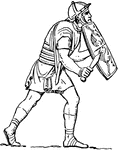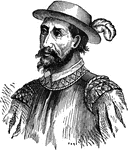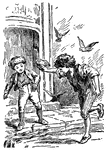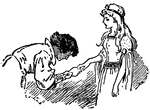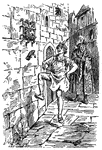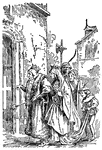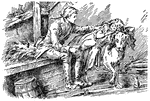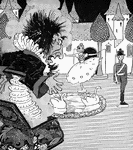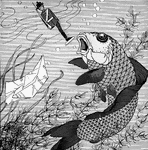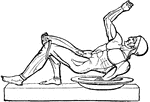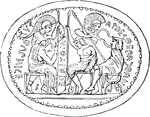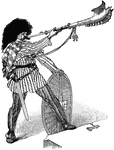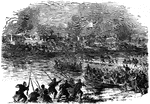
The Forlorn Hope
"'The Forlorn Hope.' Volunteers storming party, consisting of portions of the Seventh Michigan and Nineteenth…

Civil War Musical Entertainment
"Extempore musical and terpischorean entertainment at the United States arsenal, Baton Rouge, La., under…

Confederate Cavalry
"Confederate cavalry driving stragglers and skulkers back to their duty at the Battle of Antietam. One…

Castle Garden
"Reception of Brigadier General Corcoran by Mayor Opdyke and the citizens of New York, at Castle Garden,…

Banks Expedition
"The Banks Expedition- scene on the hurricane deck of the United States transport North Star-…

Butchering Cattle
"Butchering and dressing cattle for distribution to the Federal Army. The romance and reality of life…
Fort Vulcan
"Fort Vulcan, Jones's Island, Savannah River, Ga.- one of the Federal batteries cutting off communication…

Distributing
"Distributing rations and appointing a knapsack guard before a reconnoissance near Warrentown, Va. Our…

Fort Walker
"View from the interior of Fort Walker, Hilton Head, S. C. looking inland, showing the defenses from…
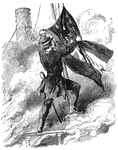
Capturing the Confederate Flag
"Lieutenant J. H. Raymond capturing the Confederate flag from the burning Confederate steamer Fanny,…

War in Virginia
"The war in Virginia. General Butler's lines south of the James, Va., with troops in position near the…
Winchester Charge
"Sheridan's Campaign. Battle of Winchester- charge of Crook's Eighth Corps, September 19th, 1864- the…

Dog at Winchester
"Sheridan's Campaign- an incident at the Battle of Winchester- a faithful dog watching and defending…

Kirby Smith
"Voluntary dispersion of Kirby Smith's Confederate army at Shreveport, La., May 23rd, 1865. There was…
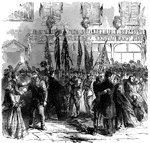
Soldiers Resting
"The soldier's rest--the friends of the Seventh and Eighth Regiments, New York Volunteers, welcoming…

Morning Detail
"The morning detail of the Fourth New Hampshire Volunteers going to work on the Hilton Head Fortifications.…

Baron von Steuben
"Baron von Steuben, a trained German soldier, who had been a pupil of Frederick the Great, joined the…
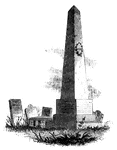
Caldwell's Monument
Caldwell's monument. The following are the inscriptions upon the Caldwell monument: East Side: "This…
![The Yeoman House. This view is from the road, looking north. An attempt was made by a soldier to burn the house, but so rapid was the march of the invaders that the flames had made but little progress before the troops were far on their road to the village. An [African American] woman, who was concealed under some corn-stalks near, extinguished the flames. The house is about half a mile from the river, on the right side of the road from the landing to Kingston village.](https://etc.usf.edu/clipart/13500/13510/yeoman_13510_mth.gif)
Yeoman House
The Yeoman House. This view is from the road, looking north. An attempt was made by a soldier to burn…
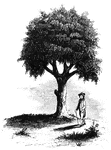
Liberty Tree
"Liberty Tree. I am indebted to the Hon. David Sears, of Boston, for this sketch of the 'Liberty Tree,'…
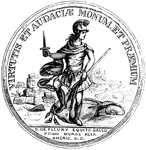
De Fleury Medal Front
"Medal awarded to Lieutenant-colonel De Fleury. This is a representation of the medal, the size of the…
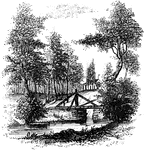
Sleepy Hollow
"Bridge over Sleepy Hollow Creek. Ichabod, according to Irving, in the Legend, returning from…

Camp Zagonyi
"Camp Zagonyi, encampment of Fremont's army on the prairie, near Wheatland, Mo., October 14th, 1861.…

Camp Zagonyi
"Camp Zagonyi, encampment of Fremont's army on the prairie, near Wheatland, Mo., October 14th, 1861.…
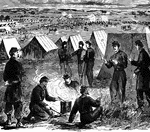
Camp Zagonyi
"Camp Zagonyi, encampment of Fremont's army on the prairie, near Wheatland, Mo., October 14th, 1861.…
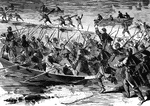
The Forlorn Hope
"'The Forlorn Hope.' Volunteers storming party, consisting of portions of the Seventh Michigan and Nineteenth…

The Forlorn Hope
"'The Forlorn Hope.' Volunteers storming party, consisting of portions of the Seventh Michigan and Nineteenth…

William Tryon Seal
"Seal and signature of Tryon. William Tryon was a native of Ireland, and was educated to the profession…
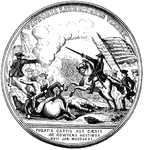
Morgan Medal Back
"Gold medal awarded to Morgan. The following are the devices and inscriptions upon the back of the medal:…

Hale Statue
"Statue of Nathan Hale. It was during his treated that an event occurred which showed how much Americans…
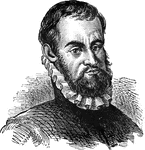
Pedro Menéndez de Avilés
Pedro Menéndez de Avilés, a Spanish soldier who landed at and named St. Augustine and attacked the…
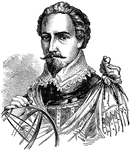
Sir Humphrey Gilbert
Sir Humphrey Gilbert (c. 1539 – 9 September 1583) of Devon in England was a half-brother of Sir Walter…

Arbalister
"One armed with the arbalist; a crossbowman; especially, a soldier carrying the arbalist of war."-Whitney,…
!["[The paguridae] includes the Hermit or Soldier Crab, <em>Pagurus Bernardus</em>, the abdominal portion of whose body is quite soft, forming a sort of cylindrical fleshy mass behind the shelly cephalothorax. As the comfort of the animal would be materially interfered with were this soft, worm-like appendage exposed to be grabbed at by every passing fish who might take a fancy to it, he usually seeks some shelter for its tail, and the habitation selected is generally the empty shell of some univalve mollusk." — Goodrich, 1859](https://etc.usf.edu/clipart/14900/14983/hermit-crab_14983_mth.gif)
Hermit-crab
"[The paguridae] includes the Hermit or Soldier Crab, Pagurus Bernardus, the abdominal portion…

Death of Laius
"When grown up, Oedipus is told by the oracle that he would slay his father and marry his mother. On…

Aeschines
"Aeschines owes the perpetuity of his fame to the fact he was the only rival of Demosthenes. He was…

Crested helmets
""The crested Achilles was pressing on in his chariot." Some idea of the ancient crests may be formed…

Ocrea
"A greave, a leggin. A pair of greaves was one of the six articles of armour which formed the complete…

Ocrea
"A greave, a leggin. A pair of greaves was one of the six articles of armour which formed the complete…
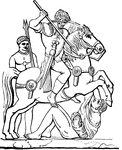
Cavalryman Charging
Charging cavalryman pictured trampling an enemy soldier and holding a spear in the Gallic War.


